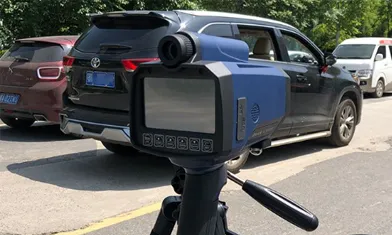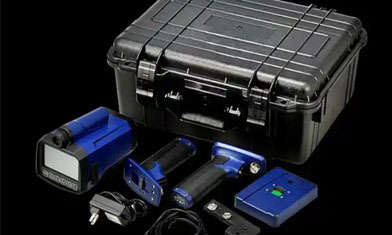How Long Is The Calibration Cycle For Handheld Speed Meters And Handheld Speed Guns?
The calibration cycle for handheld speed guns and handheld speed guns is not fixed. It is influenced by a variety of factors, including device type, frequency of use, environmental conditions, and accuracy requirements. Typical calibration intervals range from three months to one year.
Device Type:
Radar speed guns: As a common tool in traffic enforcement and other fields, they must strictly adhere to metrological regulations. According to standards such as China's JJG 528-2015 "Radar Speed Guns," annual calibration is generally required. In some regions or special scenarios where accuracy requirements are more stringent, the calibration cycle may be shortened to six months. For example, radar handheld speed guns, frequently used by traffic police on urban roads, must be calibrated annually by a legal metrology institute to ensure fair enforcement.
Laser speed guns: Based on the JJG 1127-2016 "Laser Speed Gun" specification, calibration intervals are typically set at six to twelve months. Because its measurement principle is significantly affected by environmental factors, high-precision measurement scenarios, such as measuring the speed of high-speed balls at sporting events, may require calibration every six months.
GPS speedometers: Because they rely on satellite signals, they are significantly affected by factors such as signal obstruction and interference. Calibration is recommended every three to six months. When used in areas with poor signal quality, such as mountainous areas or those surrounded by tall buildings, the calibration cycle should be shortened to ensure measurement accuracy.
Onick LS320 Portable Laser Speedometer with Printing Function
The Onick LS320 Portable Laser Speedometer with Printing Function is the first laser speedometer with superior performance and printing function launched by Onick! It is welcomed by speed measurement enthusiasts for its light appearance, simple operation and rapidity. Clear LCD display, novel design, compact style, light use, high sensitivity, clear and convenient reading! Enjoy endless speed measurement fun! OnickLS320 handheld laser speedometer is widely used in traffic law enforcement, field training, sports competition, military and police technology and other application fields.
Product features:
LCD display, clear and convenient reading, Class 1 eye-safe laser
Maximum measurement range 1200 meters, speed range 320 kilometers per hour
Speed measurement accuracy 2 kilometers per hour, distance measurement accuracy 0.3 meters, with printing function
With voice prompts, speed and sound synchronization
Novel design, compact style, light to use, high sensitivity, long-term work
Application areas:
traffic speed measurement, road factory area, highway, field training, sports competition, military and police technology, etc.
Frequency of Use:
High-frequency devices: If the device operates continuously daily, such as handheld speedometers used for long periods of time on the roadside to monitor vehicle speeds in traffic enforcement, frequent use can easily lead to wear and performance drift of internal components. Calibration is recommended every three to six months to prevent accuracy loss due to component wear.
Low-frequency devices: For handheld speedometers used only occasionally for testing in the laboratory, the frequency of use is low and the device ages slowly. Therefore, the calibration cycle can be extended to one year. However, even with low-frequency use, it is important to carefully check the device status before each use to ensure proper operation. Environmental Conditions:
Equipment in Harsh Environments: Handheld speedometers and speed guns operating in harsh environments such as high temperature, high humidity, high dust levels, and strong electromagnetic interference require significantly shorter calibration cycles. For example, in desert regions, dust and sand can easily enter the device, affecting sensor sensitivity. Therefore, equipment in such environments may require calibration every 3-6 months.
Equipment in Stable Environments: Equipment in stable environments such as indoor laboratories is less susceptible to external interference and can be calibrated on a regular basis, i.e., every 6-12 months. However, attention should still be paid to the device's storage environment to prevent temperature, humidity, and other factors from affecting device performance.
Measurement Accuracy Requirements:
High-Precision Scenarios: In scenarios requiring extremely high measurement accuracy, such as scientific research experiments and racing timing, equipment requires monthly calibration to ensure absolute data reliability. For example, in Formula 1 racing, handheld speedometers require rigorous monthly calibration to accurately measure car speeds.
Common applications, such as general traffic monitoring and logistics sorting, require relatively low accuracy. Calibration can be performed according to the device manual or industry standards, typically with a calibration cycle of 6-12 months. For example, handheld speedometers used in logistics parks to measure the speed of freight vehicles can be calibrated annually to meet daily operational requirements.
Statistical methods and periodic verification methods can also be used to assist in determining the calibration cycle. The statistical method uses historical device calibration data. If the results of multiple consecutive calibrations are stable (within 80% of the maximum allowable error), the calibration cycle can be appropriately extended; if the error approaches a critical value, the cycle should be shortened. The periodic verification method involves regularly verifying device performance using a standard speed source between formal calibrations. If the results exceed the allowable error range, immediate calibration is required. Manufacturer recommendations should also be considered. Some device brands clearly provide calibration interval recommendations in their manuals. For example, one brand of non-contact optical speedometer recommends calibration "6 months after use, then annually thereafter."





















